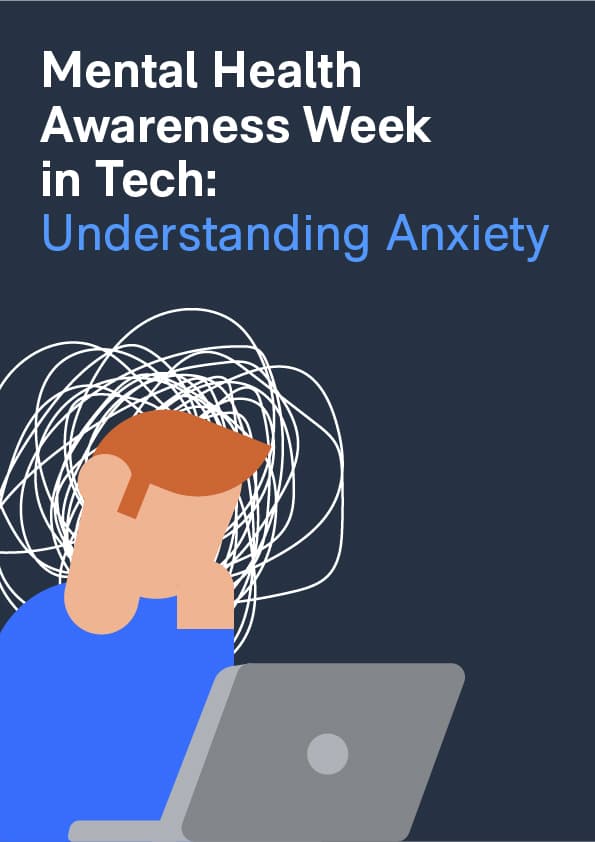- Blog
- Mental Health Awareness Week in Tech: Understandin...
May 10, 2022 | Read time 3 min
Mental Health Awareness Week in Tech: Understanding Anxiety
We’re constantly adapting our product to understand every voice, and that includes a human level. Read more about Mental Health Awareness Week here.
It's Mental Health Awareness week around the world. So, while the AI we produce may not have feelings, we all certainly do. According to the American Psychiatric Association, roughly 30% of people worldwide will experience some form of anxiety in their lives. That's far too large a number to ignore.
In the workplace, signs of anxiety include restlessness, irritability, impulsivity and feeling out of control. If your employer misses the signs and you ignore them, you may have difficulty concentrating, maintaining motivation and completing tasks.
The past two years have changed how we see anxiety, particularly in the workplace. The dramatic rise in working from home has led to a sense of inescapability for many. Of course, many have welcomed the changes for reducing commuting and feeling more in charge of their daily lives. Regardless of some perceived benefits, it doesn't change the fact that 77% of surveyed professionals are tired of Zoom meetings.
Anxiety and AI: A Burgeoning Relationship
Our research into speech-to-text highlighted just how vital it is for AI to cope with the range of human emotions. If it can't, accuracy levels drop, and consequences are felt. So, researchers are using AI to recognize signs of anxiety with more than 90% accuracy, suggesting that AI may be essential to identifying, normalizing, and treating mental health conditions such as anxiety.
You spend an average of 90,000 hours at work over your lifetime, so it's critical to look at your work-life and see if anything is negatively affecting you. For example, you could be experiencing:
Excessively long working hours and lengthy screen-time.
Diminished work-life balance, perhaps due to working from home.
Video-chat fatigue – continuous online meetings can feel invasive and exhausting.
Information overload.
Functional and social isolation from colleagues and superiors leads to second-guessing, lack of recognition or clear feedback.
At the moment, the way we work feels malleable – employers and employees are figuring out what works best in a post-pandemic world, so there might well be teething issues. It's critical to remember that it's okay to be anxious, and it's even better to talk with someone. That all starts when you notice the signs.
Mental Health Awareness: Top Tips for Dealing with Anxiety
At Speechmatics, our aim is to understand every voice. Mental Health Awareness Week is about understanding and acknowledging mental health, including the types of anxiety many experiences daily. The NHS has crafted a list of anxiety symptoms you may experience in and out of the workplace:
Feel tired, on edge, restless or irritable.
Feel a sense of dread.
Be unable to concentrate or make decisions.
Have trouble sleeping.
Feel sick, dizzy, sweaty or short of breath.
Be shaky or trembly.
Get headaches or tummy aches.
Avoid situations or put off doing things you are worried about.
Have difficulty falling or staying asleep.
Experience a noticeably strong, fast or irregular heartbeat.
Have pins and needles.
Have a dry mouth.
Sweat excessively.
Repeatedly check things or seek assurance from others.
On a daily basis, things like a full night of sleep, scheduled worry time, helping the community, and easing up on caffeine and alcohol intake all help you live with anxiety. If you remember one thing from this article, however, let it be this quote from writer Annie Dillard, winner of the 1975 Pulitzer Prize for general nonfiction: "How we spend our days is, of course, how we spend our lives."